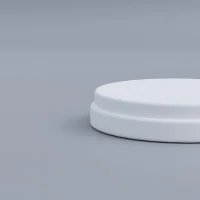Every month, millions of women navigate the complexities of their menstrual cycles. These cycles are much more than a biological process; they are a barometer of overall women’s health and wellbeing. The cycle graph, a key tool in understanding menstrual health, illustrates the hormonal fluctuations that women experience throughout their menstrual cycle. In the quest to redefine womanhood, Benlysta has emerged as a revolutionary drug impacting the lives of women living with systemic lupus erythematosus (SLE), a chronic autoimmune disease that can influence menstrual cycle health.
In this comprehensive exploration, we’ll delve into the role of Benlysta in maintaining menstrual cycle health, the significance of cycle graphs, and how they are redefining womanhood.
The Link Between SLE and Menstrual Health
Systemic lupus erythematosus (SLE) is a condition that predominantly affects women, with hormone cycles often playing a role in symptom severity. Understanding the relationship between SLE and menstrual health is crucial for effective treatment and management strategies colorful hair extensions.
How SLE Affects the Menstrual Cycle
SLE can lead to irregular menstrual cycles, increased pain, and even fertility issues. These symptoms can disrupt a woman’s monthly cycle graph, altering the typical patterns of hormonal changes.
Complications Associated with SLE:
- Irregular menstrual patterns: Women with SLE might experience skipped periods or irregular cycles due to hormonal imbalances.
- Increased menstrual pain: Inflammation associated with SLE can exacerbate menstrual cramps and discomfort.
- Fertility issues: SLE can affect fertility by influencing ovulation and the endometrium’s receptivity to implantation.
Understanding the Cycle Graph
The cycle graph provides a visual representation of the hormonal changes throughout the menstrual cycle. Analyzing these graphs can help women with SLE understand their cycles better, potentially revealing patterns linking flares in symptoms to specific cycle phases.
Benlysta: A Beacon of Hope for Women with SLE
Benlysta (belimumab) is the first medication in over 50 years to be approved for the treatment of SLE. Its introduction has marked a significant advancement in the management of lupus symptoms, including those that affect menstrual health.
The Science Behind Benlysta
Benlysta is a monoclonal antibody that targets B-lymphocyte stimulator (BLyS), a protein that contributes to B-cell survival and activity. B-cells are implicated in the abnormal immune response characteristic of SLE.
How Benlysta Works:
- Inhibits B-cells: By targeting BLyS, Benlysta reduces the number of autoreactive B-cells that can cause inflammation.
- Decreases disease activity: Lowering B-cell activity can diminish overall disease activity, potentially affecting menstrual cycle patterns.
Benlysta’s Impact on Menstrual Cycle Health
The application of Benlysta for women with SLE has been game-changing, especially concerning menstrual cycle health:
- Improved regularity: Some women report more regular cycles after starting Benlysta, indicating a normalization of the cycle graph.
- Reduced pain: The decrease in SLE-related inflammation could lead to less painful periods.
- Enhanced fertility: By controlling SLE symptoms, Benlysta may contribute to a more conducive environment for conception.
When Technology Meets Womanhood: Utilizing Cycle Graphs
With the advent of digital health applications, women can now monitor their menstrual cycles with unprecedented ease. These tools often include cycle graphs, enabling a detailed analysis of monthly hormonal trends.
The Role of Digital Cycle Graphs in Monitoring Health
Digital cycle graphs provide a convenient and accurate way for women to track their menstrual health, including for those managing SLE.
Benefits of Digital Tracking:
- Establishing patterns: Tracking allows women to observe fluctuations and patterns over time.
- Predicting flares: By correlating symptoms with the cycle phase, women with SLE might anticipate and manage flares better.
- Informed medical discussions: Sharing cycle graphs with healthcare providers can enrich consultations, tailoring treatments like Benlysta to the patient’s specific needs.
Case Study: Benlysta and Menstrual Cycle Optimization
Clinical observations and studies have highlighted cases where Benlysta positively affects menstrual cycle health in women with SLE. Through a detailed review of these real-world experiences, we can glean valuable insights into how Benlysta is redefining womanhood for those with SLE.
Analyzing the Trends
A comparison of menstrual cycle graphs pre and post-Benlysta treatment can reveal some intriguing trends.
Before and After Benlysta: A Comparison Chart
- Cycle Length: Reduction in prolonged or shortened cycles, leading to a normalization of the 28-day average.
- Menstrual Symptoms: Decreased severity of cramps, bloating, and other associated symptoms.
- Hormonal Levels: Stabilization of hormonal imbalances typically seen in SLE patients, reflected in cycle graphs.
Personal Stories of Transformation
Anecdotal evidence from women who have used Benlysta underscores the profound impact on their lives, illustrating improved menstrual cycle health and overall wellbeing.
Embracing a Holistic View of Womanhood
The incorporation of Benlysta into the treatment regimen of women with SLE aligns with a modern, holistic approach to women’s health.
Integrating Menstrual Health into Overall Wellbeing
Understanding and managing menstrual health is an integral component of holistic care for women, especially for those with chronic conditions like SLE.
The Intersection of Physical and Emotional Health:
- The regularity and health of menstrual cycles can impact emotional wellbeing.
- A holistic approach includes consideration of lifestyle, stress levels, and personal goals.
Educating and Empowering Women
Comprehensive education on menstrual health and the available treatments, including Benlysta, empowers women to take control of their health journey.
Tools for Empowerment:
- Informational resources: Accessibility to reliable information about menstrual cycles and SLE.
- Support groups: Communities that offer support and share experiences with Benlysta and menstrual health.
Conclusion: The Future of Women’s Healthcare with Benlysta
Redefining womanhood involves recognizing the unique healthcare needs of women, particularly those with systemic lupus erythematosus. Benlysta has emerged as an essential component in this paradigm shift, enabling women to reclaim their menstrual cycle health and, by extension, their overall quality of life.
Through the lens of the cycle graph, we can better understand the complex interplay between SLE and menstrual cycles, and how treatments like Benlysta can positively intervene. As we continue to advance our knowledge and technology, the cycle graph remains not just a tool for tracking and analysis, but a symbol of the empowerment and individualized care that every woman deserves.
The future is bright for women’s healthcare, with Benlysta leading the way in providing a renewed sense of hope and vitality for those impacted by systemic lupus erythematosus.










